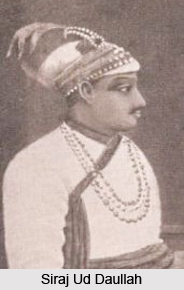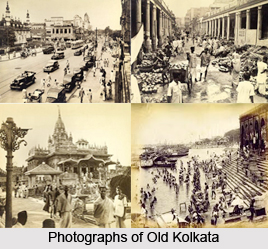 Modern History of Kolkata is mixed with the history and the transformation of three villages- Kalikata, Gobindapur and Sutanati, in particular Kalikata, where Calcutta is located, came into the possession of the British East India Company in 1690 and some scholars like to date its beginnings as a major city from the construction of Fort William by the British East India Company in 1698.
Modern History of Kolkata is mixed with the history and the transformation of three villages- Kalikata, Gobindapur and Sutanati, in particular Kalikata, where Calcutta is located, came into the possession of the British East India Company in 1690 and some scholars like to date its beginnings as a major city from the construction of Fort William by the British East India Company in 1698.
Kolkata- Capital of India
From 1772 to 1911, Calcutta was the capital of British East India Company and later British Empire in India after 1857. From 1912 to India`s Independence in 1947, it was the capital of all Bengal. After Independence, Kolkata- City of Joy remained the capital of the Indian state of West Bengal.
Seven Years War and the Small Village in Bengal
When the Seven Years` War broke out, owing to their constant rivalry with the French, and the fall of Madras to the forces of Dupleix, early in 1756 the British authorities in Calcutta began repairs to the fortifications of old Fort William, which were extremely decayed. This irritated the Siraj ud Daulah, the independent ruler of Bengal who viewed it as a threat to his sovereignty. Thus, the Nawab of Bengal captured Fort William and killed several British people in Kolkata. He renamed Calcutta into Alinagar after the previous Nawab, and his maternal grandfather, Alivardi Khan. Manikchand was appointed as the ruler of Alinagar, Siraj ud daullah returned to Murshidabad to rule. On 2nd January 1757, Watson and Robert Clive retook Calcutta with a force of British East India Company and the assistance of the Royal Navy. Hearing the news, Siraj ud-Daula moved to attack Calcutta, but fearing an attack from Ahmad Shah Abdali, after a few days of war he signed the Treaty of Alinagar with the British East India Company, giving them permission to build the fort.
Although Siraj ud-Daula conceded temporary defeat in the Pact of Alinagar, he once again began scheming with the French East India Company against the British.
 Third Carnatic War and Alinagar
Third Carnatic War and Alinagar
Third Carnatic War was starting in the south. Also at this time, nobles such as Jagat Seth, Mir Jafar, Rai Durlav, Omichand and Rajballav were plotting against Siraj ud-Daula and they invited Robert Clive to take part in their plans. Robert Clive seized on this plan to get rid of two enemies at once. Citing non-existent reasons, he attacked Murshidabad, having previously reached an agreement with Mir Jafar to install him on the musnud of Bengal. On 23rd June 1757, Battle of Plassey broke out against Nawab of Bengal by British and resulted in decline of Nawab rule in Bengal and laid the foundation of modern history of Kolkata.
Calcutta as the Capital of India
In 1772, Calcutta became the capital of British India, a decision made by Governor General Warren Hastings. On January 29, 1780, Bengal Gazette or the Calcutta General Advertiser became the first newspaper to be printed in India, and is an invaluable chronicle of the social life of Anglo-Indian society in Calcutta.
Aftermath of 1857
After the Indian mutiny in 1857, British Government in India came into existence and Calcutta was emerged as the administration seat of British Government in India. In 1883, Surendranath Banerjee organised a national conference. This conference heralded the birth of Indian National Congress. Surendra Nath Banerjee was early eminent Kolkatan, who provoked and influenced nationalist thinking in the late 19th and early 20th centuries. The Muslims were also involved in the nationalist movement, most notably Fazl Huq who from Calcutta in the 1930s attempted to organise a non-communal peasant party to agitate against the British and the wealthy Indian landowning class. The fact that many of the Hindus in this latter group were linked to the local Congress organisation and dominated the mainstream nationalist movement in Bengal from Calcutta led to attempts to frustrate Huq`s activities and fed into the tragic decline in communal relations that savaged Kolkata in 1946 and 1947.
Kolkata after 1947
The intense violence between Hindu and Muslim that started from Beliaghata caused during the partition of India led to a shift in demographics in Bengal, and especially Kolkata. Kolkata received millions of refugees from what became Bangladesh without receiving substantial assistance from the central government of India at that time.



















